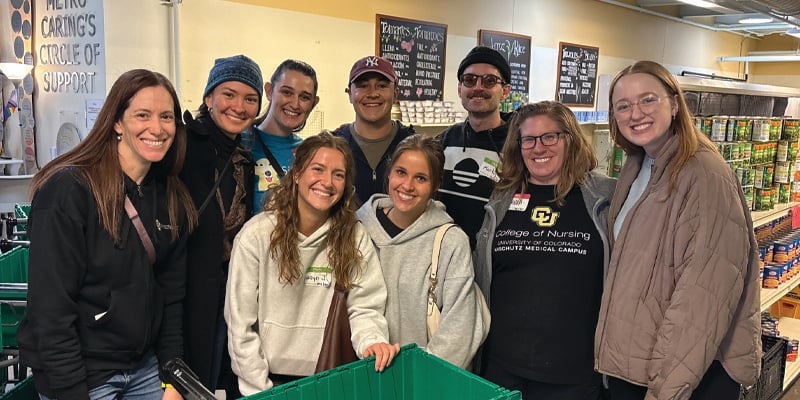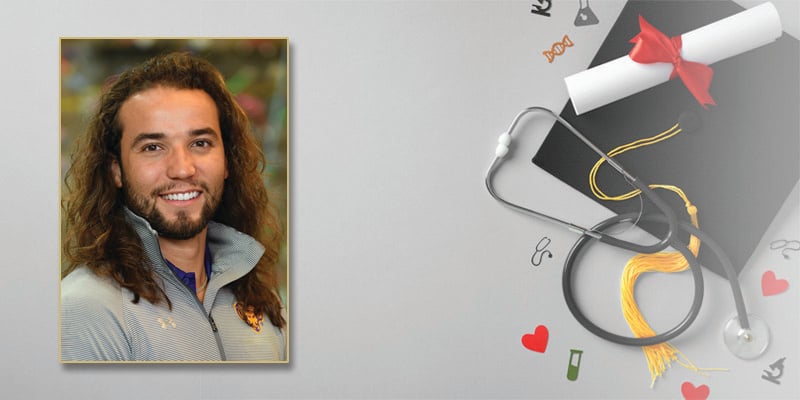A 10-year-old girl smiles for the camera as she holds her artwork — a picture of a dangerous-looking creature — in front of her chest. Plastic tubes poke out from behind the masterpiece, covering her lap. Peach fuzz tops the little girl’s head as she beams up from her hospital chair.
Called a ‘Narwhal-a-saur,’ her creation “might look a bit mean,” the little girl explained in a narrative on the other side of the research poster bearing her photo. “But he is really nice. His sharp teeth and horns contain healing powers,” said the girl, a cancer patient. “When he bites or pokes a person, it doesn’t even hurt.”
After two decades in pediatric oncology, CU Nursing PhD candidate Jennifer Raybin has seen her share of suffering, watching her little patients struggle with pain, illness and the concept of death.
As a lifelong dancer and lover of the arts, Raybin also knows creative work makes people feel better. “Anything that supports them along the way is going to make a difference,” said Raybin whose capstone project focused on her work with her young patients and creative arts therapy (CAT), which employs art, music and movement. Raybin knows CAT studies in adult cancer patients found improved quality of life and hopes adding a little fun and creativity amid the drug infusions and needle pricks can help her little patients.
“It started with out-patients coming to the infusion center for their chemotherapy treatments,” she said of her first CAT study.
While their therapeutic drugs slowly dripped into their veins, the children would join in a circle, finger-painting, playing parachute and building popsicle-stick sculptures, Raybin said. “Or, sometimes, they’d beat on drums to get their anger out.”
Raybin first presented some of her research in 2019 to her colleagues during CU Nursing’s first-ever Research & Scholarship Symposium. Since that poster presentation, she has continued to analyze these data from 100 children with cancer. Her research showed evidence that an increased amount of creative arts therapy is related to improved reports of quality of life. “We also showed that younger kids reported better quality of life. There were no associations with race or sex and quality of life. Our exploratory aim examined the idea of physical posture as a measure of quality of life and amazingly, kids stood up straighter with more CAT, and also reported better quality of life!”
Her work has resulted in the hiring of a full-time creative arts therapist for the cancer center at Children’s Hospital Colorado, a big win for her and her patients, she said. Raybin is grateful to be able to practice on the Anschutz Medical Campus and to pursue her doctoral degree in a research center where “I can build on past and future collaboration. CU’s program has fostered incredible research partnerships that will continue in my postdoctoral career as I endeavor to pursue grant funding.”

Creative Arts Therapy (CAT), which employs art, music and movement created by young patients.



